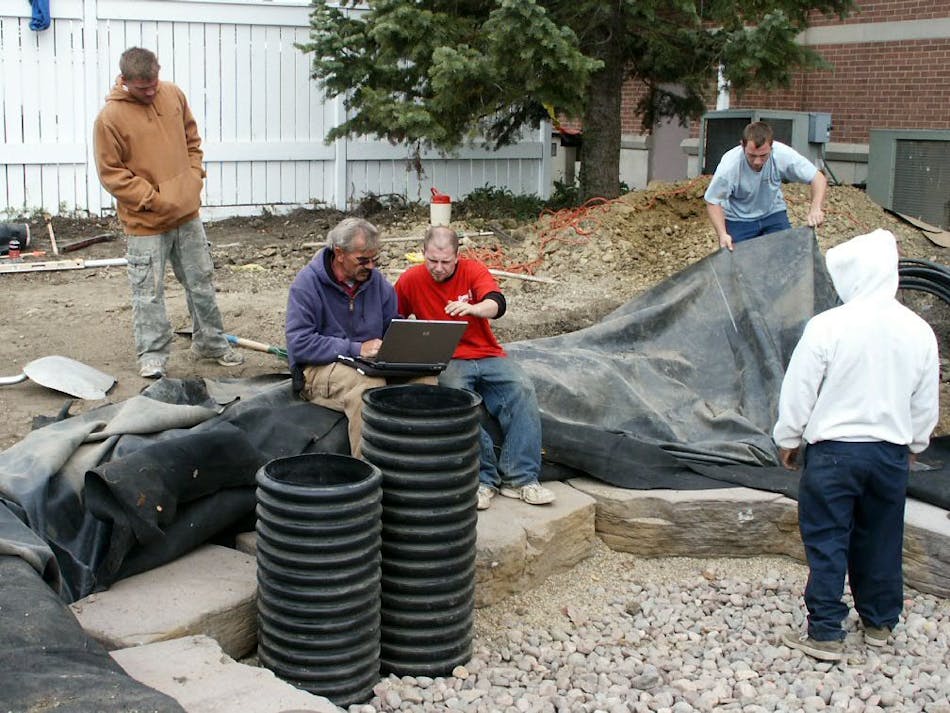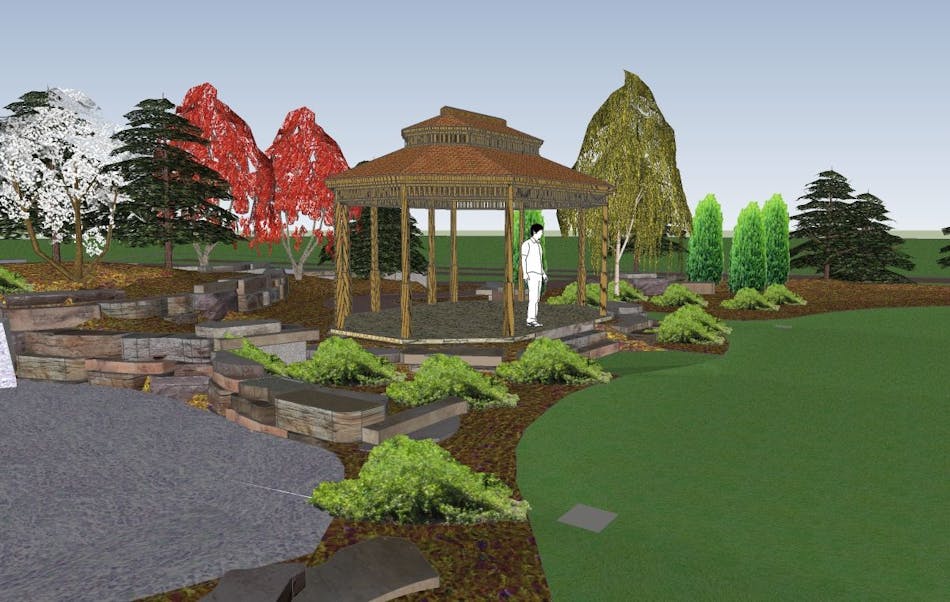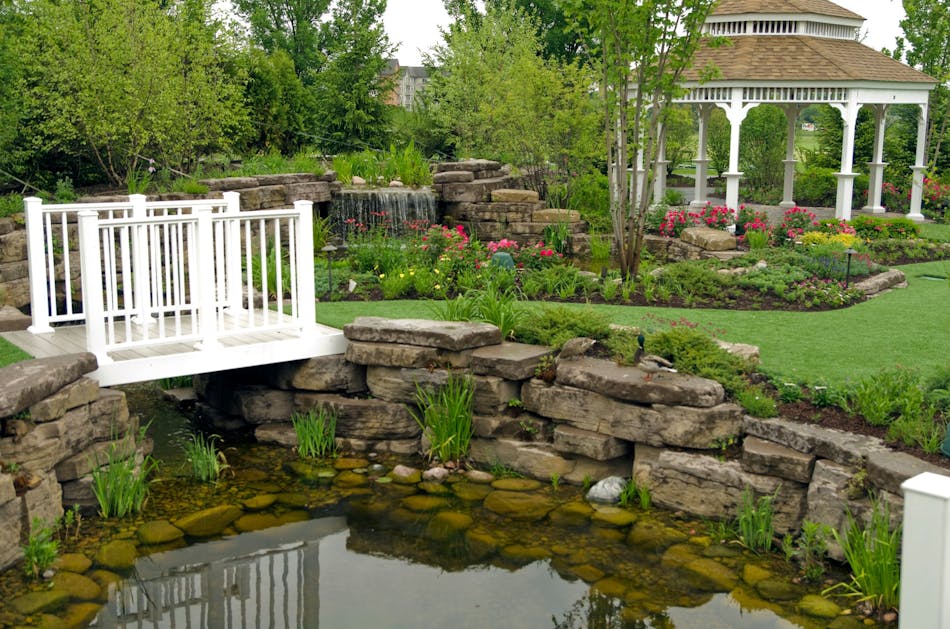THE CHALLENGE
"As a landscape architect, the biggest challenge is actually achieving the outcome I envision, especially when dealing with natural elements. Rock that comes from a quarry can vary in size, shape and even color," Buczkowski explained. "That's ultimately why we chose Rosetta - it's as natural as you can get, but you know exactly what you're going to get."
For this project, Buczkowski chose the Rosetta Outcropping Collection because it most closely matched the aesthetics and scale the project required. The architectural grade, wetcast concrete Outcropping Collection combines 12 unique size stones with 24 unique stone textures molded from actual, world-class weathered stones.
THE DESIGN
To ensure that the project matched his vision, Buczowski's design process utilized several technologies. He first designed the project in AutoCAD, then transferred the data into Google SketchUp to create 3D models of the site to show to prospective brides and grooms.
"When you're bringing a concept into reality, the installation process can present little twists and turns in the orientation of blocks that can really affect the final outcome of the project. The only way I could be reasonably assured that everything would be built to the exact scale was plotting GPS coordinates for each of the blocks."
To accomplish this, Buczkowski assigned a point to the corners of each block in AutoCAD, which he then transferred to a GPS system that installers used in the field. "The ability to map out the project using GPS coordinates allowed us to deliver on our promise. I was sure that what I drew could be built in the field," Buczkowski said.
THE CONSTRUCTION
On construction day, a 32-ton crane arrived at 7:30 am and began setting blocks, which Buczkowski's crew had palletized in sequence to expedite the installation process.
"The crane operator told us, 'You guys have to slow down because you're cramping my hand!' We were installing at least one piece a minute. By the end of the day, we had installed 96 tons of material in just 7.5 hours by a crew that had never placed Rosetta before. We didn't even lose any fingers!" Buczkowski joked.
He continued: "We've had wall experts look at the project and say, if we would have done this with natural stone, it would have taken 2 ½ to 3 weeks of work. We did it in just 7.5 hours," Buczkowski said.
THE OUTCOME
Buczkowski was very pleased with the way Rosetta worked on his project. "The guys here joke that I'm 'the Rosetta guy,' but I say, 'Hey, I'm not selling Rosetta. This product works.'"
He continued, "As a landscape architect, you have to deliver on your promise. This is extremely important, especially when you're dealing with low bid, taxpayer-funded contracts. With Rosetta, we were able to get the results we wanted," Buczkowski concluded.
In total, 2,800 square feet (260 square meters) of Rosetta Outcropping stone was installed at the event area, and an additional 3,700 square feet (344 square meters) of Outcropping stone was used to create retaining walls, a retention pond, and other features throughout the rest of the golf course.
PROJECT DETAILS
Project: Bridges Of Poplar Creek Country Club Customer: Hoffman Estates Park District Location: Hoffman Estates, Il Manufacturer: Rosetta of Michigan Landscape Architect: Gary Buczkowski, Director Of Planning & Development Installer: Hoffman Estates Park District Crews Year: 2010 Case: 22 - Poplar Creek


